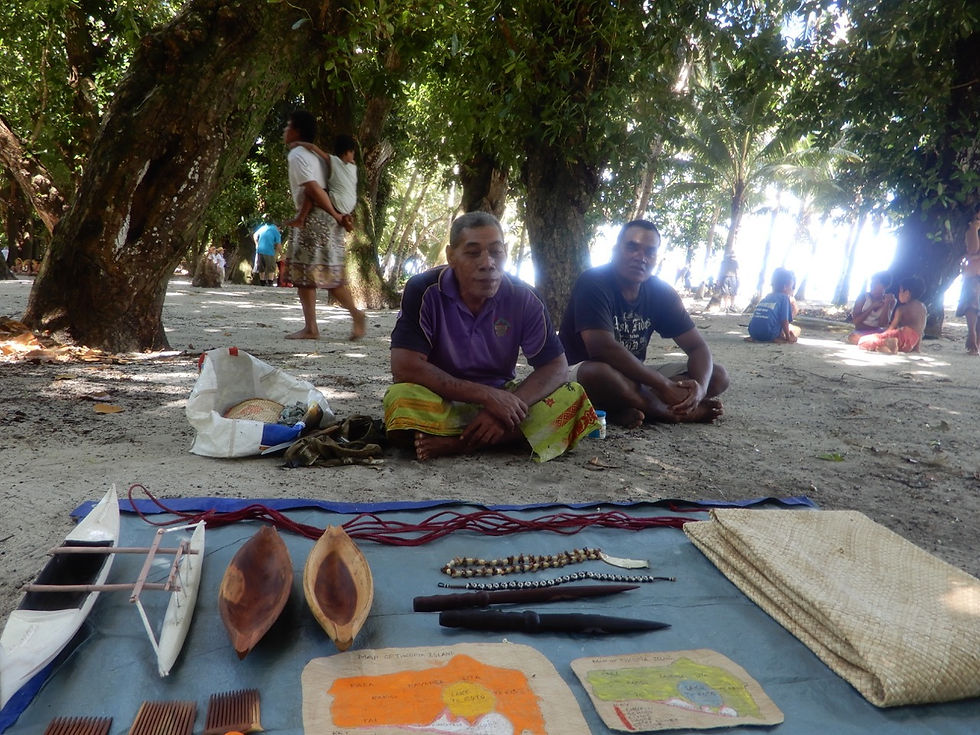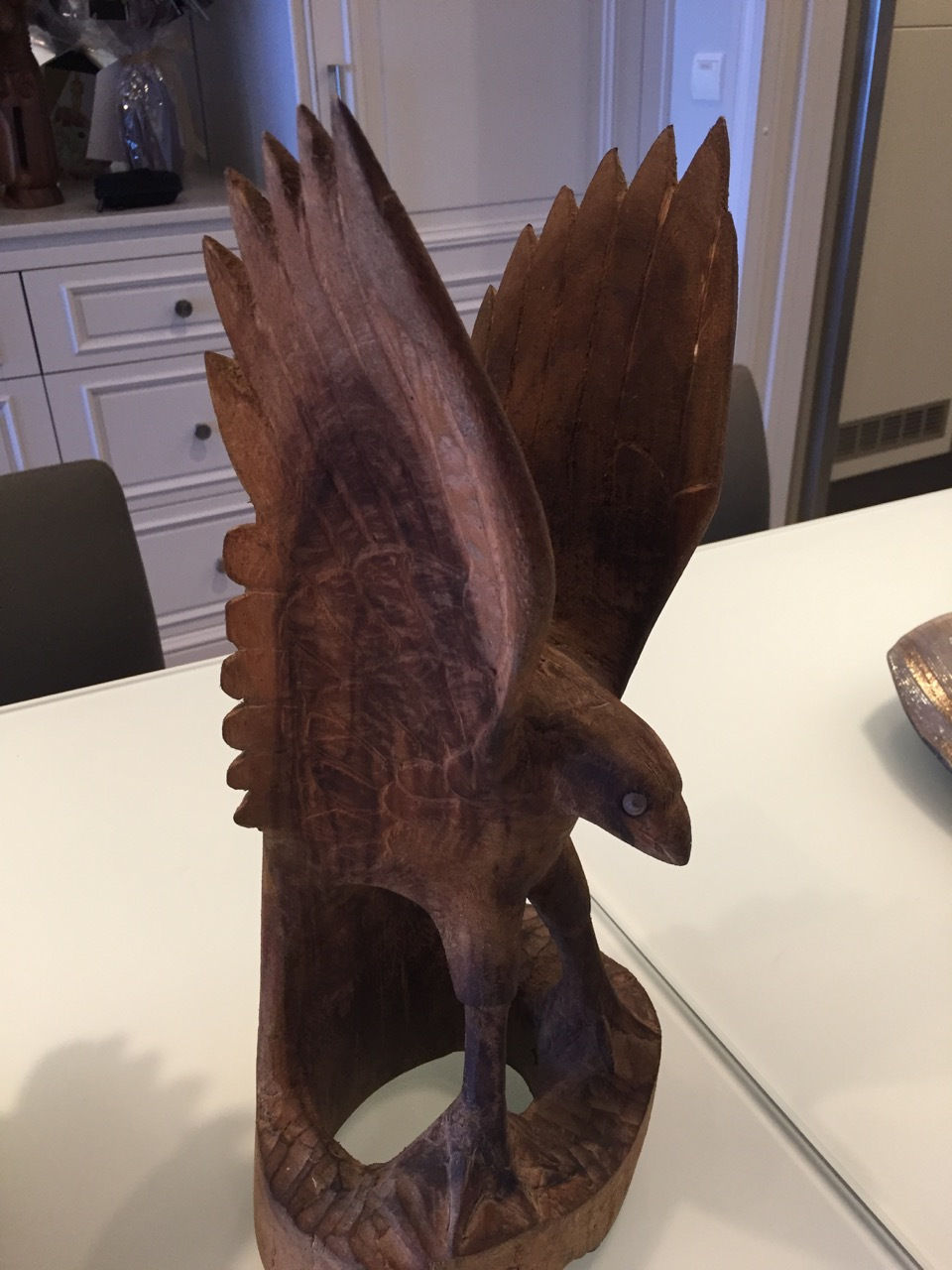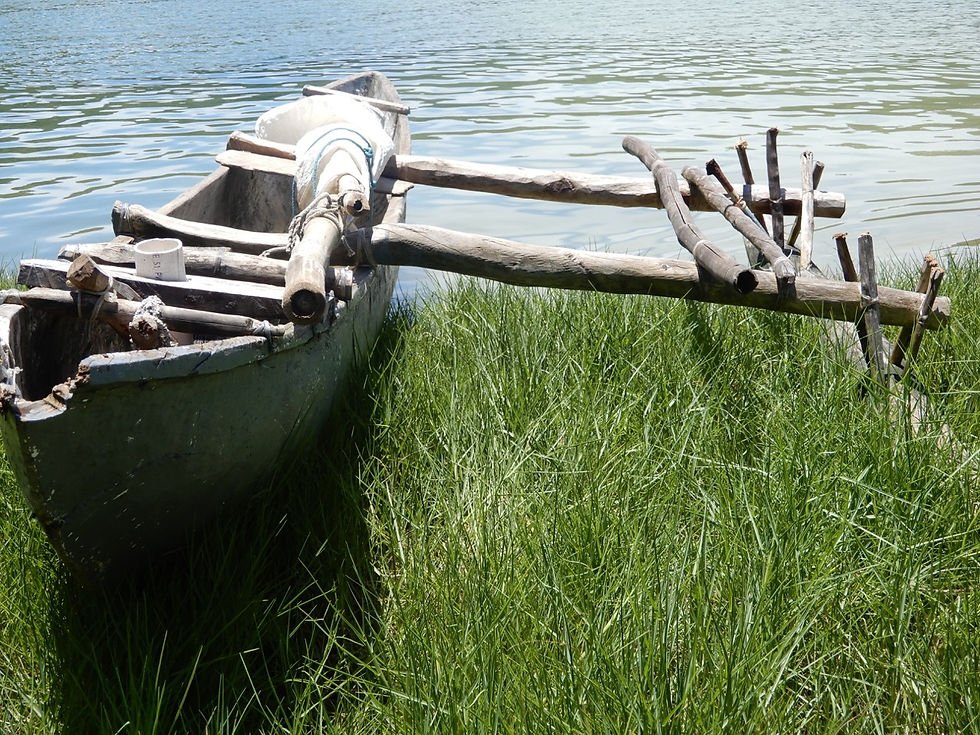Tikopia, Solomon Islands
- Peter Antonucci

- Oct 28
- 5 min read
Saturday | March 4, 2017
My day began early with a 5:30AM sail-in to the remote and beautiful island of Tikopia. On the 12th deck, I joined the other photographers as this tiny island came into view amidst the entirety of the Pacific ocean. (Sometimes I wonder how the cat even finds these places. But I guess having GPS is a lot better than sailing by the stars as they did hundreds of years ago..)

Tikopia, a remote island in the South Pacific, which is the highlight of any freshman anthropology course, offers the rare chance to experience a tropical paradise where traditional customs remain intact.
While technically located geographically in Melanesia, Tikopia’s descendants are Wallis and Tongan settlers so the island is considered a “Polynesian Outlier.” In fact, the people here are closer in appearance to Hawaiians or Polynesians than to Melanesians.

The island is essentially an orchard where most anything and everything can grow. That is important because the people here have to be totally self-sufficient. They grow coconuts, breadfruit, yams, bananas, taro, manioc, tapioca, kasava, and pandanas palms.
With such a limitation on available food, there was also concern about overpopulation. Unfortunately, infanticide, abortion, and elder suicide are all practiced here. In addition, many men in their teens set off on dangerous overseas voyages and most do not return, either because they end up somewhere else or, most likely, because they die.
With much anticipation, I boarded a zodiac as I had been told this is one of the most beautiful and memorable islands in all of the Pacific. By the end of the day, I had reached the same conclusion. These were the most welcoming people I have met in all my journeys. At various times throughout the day, a little hand would slide upward and place itself into my hand.
All the people from the near side of the island had come to the beach to display their wares for purchase.


We really didn’t want to buy anything, but we saw this eagle and decided it was the appropriate way to make a donation to the local economy.

This man made it and sold it to us.

Then, a bit later, we saw another eagle and decided that we needed bookends!

And here is his father.

A group of boys were designated to sit still for photographs. And they looked so cute.

Their faces were so inviting.



We were invited to visit one – but only one – of the local houses. The interesting thing was that, even though these people are quite tall, the entrances were so very small along the ground.
Inside, the houses were surprisingly roomy, but nothing to envy.


Most all of the men were over 6 feet. At one point, I remarked that the more muscular men could play tight end in the NFL.
For example, here is Ariki, the paramount chief. (There are different levels of chiefs; the paramount chief is the ultimate ruler of the tribe.)

Also interesting is the fact that one may never walk with his back to the chief, or display his feet to the chief.
One thing I immediately observed about the people here is that they all seem to have some sort of gum disease and most have lost their front teeth. That must be from chewing all the betel nuts and sugarcane. Of course, there is no dentist or doctor on the island; only a native “nurse” who tends to their basic needs.
In the center of the area where people sat about, was a pig with her young piglets suckling on her.

The natives performed a dance for us, and the dance style was distinctly more Polynesian than what we saw on the other islands so far in Melanesia.
As always, it was the young boys and girls who were most entertaining.

The men took it all so seriously.

At one point we came upon a javelin throwing contest.

This was not your normal athletic competition with the prize being allocated to the winner. In fact, the winners get nothing. It is the losers who get something. The team that loses the competition has to eat all the waste secreted by the winners at the end of the competition. Yes, the winners poop and pee into bowls and the losers chow down.
We sat across from the local team.

There was a small graveyard outside the collection of huts.

But there were also some graves located among and between the huts.

Apparently those graves belong to deceased elders and chiefs whose spirits the survivors want to keep close to them.
Some of the graves have suitcases on them. First, it must be noted that suitcases, or any item from the outside world, are rare here. But the reason for the suitcases on the graves is that the senior members of the community have to pack their belongings for the afterlife.
Then we began our walk-–the walk from hell.

We walked for more than two hours in 90° heat over jungle terrain and coral and rock formations along the coast.
Actually, before we could begin to walk, the chief had to send messages to the other villages to ensure our safety. Also, we needed a guide who was recognized by the other tribes so no harm would be visited upon us.
At first, we came by the local school. Our next stop was the church.

One of the anthropologists from the ship explained to us that services are held every morning at 6:00 AM and every afternoon at 5:30 PM. Every townsperson attends.
Mangrove trees were everywhere.

In this culture, women do all the work. This woman toiled in the fields with a machete.

This one carved wood.

In a pathetic line, with many falling away and turning back, we finally hit the beach.

Only it wasn’t really a sandy beach. It was all rocks and coral.

We kept hiking until we got to a lagoon, the putative centerpiece of the island, which was brackish and smelly.

Although some native children were in the water, we were advised that it was far too unhealthy for us to wade into it.

Once there, we saw the vessels they used to navigate the waters.

So we turned back and commenced our long walk back to the ship.
At another point, we got lost – seriously lost. We found our way into a village we had not seen before. This was totally remote – no one had clothes.

Pigs foraged among the huts.

I put us into “survival mode,” meaning we would no longer drink anything from the one water bottle still in my backpack. In the tragic event we were to be stranded, we would need that water to live in the oppressive jungle. Finally, we saw a fellow traveler and followed him.
But along the way, we saw many memorable sights. For example, isn’t this girl adorable?

And observe the juxtaposition of this straw hut and the solar panels. Solar panels are becoming more popular as villagers are getting small electronic devices.

Finally, we made it back to the beach. Because of the extraordinary tidal flow here, we had to walk a few hundred yards out before we could get on the zodiacs.

Back on the ship, we had a long lunch in Fredys with friends, discussing ship politics, which is a topic that is becoming quite boring to me.
Even though I was exhausted, I decided to go out snorkeling in the afternoon. The visibility was very good, but there were not a lot of large fish to see. As a result, I returned to the ship fairly quickly.
At the evening briefing, we learned something interesting. There is one generator on the island and it is out of service. We brought one of our electrical engineers ashore early in the morning to pick it up, and by the end of the day we had returned it fully functional and completely refurbished! It's nice to know we do some kind of good in the world – on the World.
After the expedition briefing, we had dinner in Marina with Terry and Linda. Again, much of the meal was consumed with discussions of board politics and ship shenanigans.

Comments